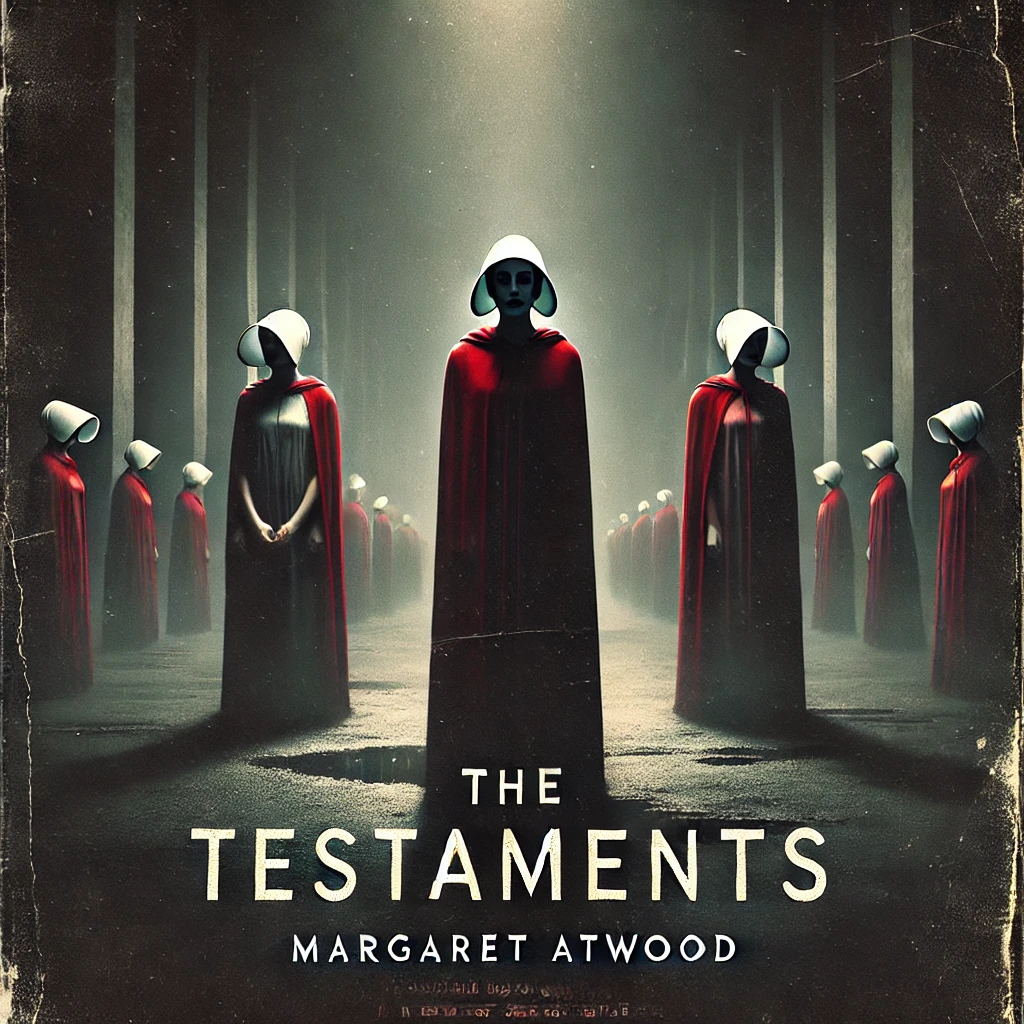Introduction to ‘The Catcher in the Rye’
J.D. Salinger’s seminal work, The Catcher in the Rye, was first published in 1951 and has since become a cornerstone of American literature. The novel chronicles the experiences of Holden Caulfield, a rebellious and disenchanted teenager navigating the complexities of adolescence. Set against the backdrop of post-World War II America, Salinger’s narrative explores themes of isolation, identity, and the loss of innocence, resonating deeply with readers across generations.
The plot is driven by Holden’s journey through New York City after being expelled from Pencey Prep, a prestigious private school. Discontented with the ‘phoniness’ he perceives in the adult world, Holden embarks on a quest to find meaning and authenticity in a society fraught with superficiality and pretense. Throughout his odyssey, he interacts with various characters who inadvertently highlight his deep-seated feelings of alienation and his struggle to preserve his own sense of purity.
The Catcher in the Rye holds a significant place in the American literary canon, not only for its evocative portrayal of teenage angst but also for its unflinching examination of the human condition. Its candid exploration of sensitive topics such as mental health, sexuality, and existential despair was groundbreaking at the time of its release and continues to provoke critical discussion and analysis.
Salinger’s novel has been both lauded for its authenticity and chastised for its controversial content, making it a frequent subject of censorship debates in schools and libraries. Despite, or perhaps because of, this contentious reception, The Catcher in the Rye endures as a profound study of adolescence and isolation. Its protagonist, Holden Caulfield, has become an emblematic figure, embodying the universal struggle to reconcile the innocence of youth with the complexities of adult life.
Adolescence and Identity Formation
Holden Caulfield, the protagonist in J.D. Salinger’s seminal work “The Catcher in the Rye,” serves as a poignant representation of the struggles that typify adolescence. Throughout the novel, Holden grapples with a barrage of internal conflicts and the complexities of identity formation, reflecting the tumultuous journey toward self-discovery that many adolescents face.
From the onset, Holden is depicted as a young man in turmoil, struggling to reconcile his emerging identity with the expectations and hypocrisies he perceives in the adult world. This dissonance is vividly illustrated in his relationships with other characters. For instance, Holden’s interactions with his younger sister, Phoebe, are imbued with affection and protectiveness, highlighting his desire to shield innocence from the corrupting influences of adulthood. Conversely, his disdain for figures like Stradlater and Mr. Antolini reveals his mistrust and contempt for adult pretension and phoniness.
Holden’s journey toward self-discovery is further complicated by his experiences at various educational institutions, which epitomize the societal pressures and conflicts inherent in the transition from childhood to adulthood. His expulsion from Pencey Prep symbolizes his inability to conform to the rigid expectations imposed upon him. This struggle is compounded by his frequent musings about his deceased brother, Allie, whose untimely death haunts Holden and exacerbates his sense of isolation and identity confusion.
Throughout the narrative, Holden oscillates between a cynical view of the world and an earnest, albeit clumsy, search for authenticity and meaning. The red hunting hat he dons is emblematic of his quest for individuality and his need to carve out a unique identity amidst the cacophony of societal norms. This iconic symbol underscores his ongoing struggle to define himself in a world that often feels alien and hostile.
In essence, Holden’s experiences in “The Catcher in the Rye” poignantly encapsulate the essence of adolescence – a pivotal phase characterized by self-doubt, rebellion, and the unrelenting pursuit of identity and belonging. Salinger’s portrayal of Holden Caulfield’s journey resonates with readers as a reflection of the universal challenges faced during the formative years of youth.
Holden Caulfield, the protagonist of J.D. Salinger’s “The Catcher in the Rye,” frequently resorts to isolation as a form of self-protection against what he perceives as the phoniness and hypocrisy of the adult world. Throughout the novel, Holden’s encounters with various characters often end in disappointment or reinforce his negative worldview, prompting him to withdraw from social interactions as a safeguard for his mental and emotional well-being. This pattern of isolation becomes a recurrent theme, illustrating his struggle to navigate the complexities of adolescence and identity formation.
One notable instance of Holden’s deliberate isolation occurs when he leaves Pencey Prep after a confrontation with his roommate, Stradlater. Disoriented and perturbed by Stradlater’s flippant attitude towards his date with Jane Gallagher, a girl Holden deeply cares about, he chooses to leave the school abruptly. This decision to isolate himself from his peers and educational environment signifies his broader disconnection from societal expectations and the protection he seeks from further emotional turmoil.
Another significant moment is Holden’s brief stay at the Edmont Hotel in New York City. Isolating himself in a largely dysfunctional environment allows Holden to maintain his judgments about society while avoiding meaningful connections that might challenge his views. For instance, his interactions with characters like Sunny, the young prostitute, and Maurice, the elevator operator, end negatively, reinforcing his apprehensions and resulting in deeper withdrawal into his isolated state. These encounters serve as cognitive affirmations of his mistrust in others and provide a cushion against vulnerability.
Additionally, Holden’s frequent visits to places of his past, such as the museum, demonstrate his tendency to seek solace in static, unchanging environments as opposed to engaging with the evolving and often hypocritical real world. These visits highlight his desire for preservation and control, elements he finds lacking in his actual experiences with people.
In essence, Holden’s use of isolation is a coping mechanism to shield himself from the complexities and perceived insincerities of the adult world. However, this protective measure also exacerbates his feelings of alienation and disrupts his journey towards understanding and integrating into society. His continuous oscillation between seeking connection and retreating into isolation underscores the profound impact of his protective yet self-destructive behavior on his mental and emotional health.
The Symbolism of the ‘Catcher in the Rye’
Holden Caulfield’s reverie of becoming the “catcher in the rye” stands as one of the most profound metaphors in J.D. Salinger’s timeless novel. This dream, steeped in symbolism, encapsulates Holden’s deep-seated yearning to shield the unspoiled innocence of youth from the corruption and harsh realities of adulthood. By envisaging himself as a guardian who saves children from tumbling over the cliff’s edge, Holden fervently clings to the idyllic vision of purity he associates with childhood.
The field of rye signifies an idyllic world where children roam freely, untouched by the exigencies of maturity. The cliff, conversely, represents the precipice of adulthood, a descent into a world marred by complexity and moral ambiguity. Holden’s desire to catch the children before they fall epitomizes his rejection of this inevitable transition. He longs to halt time and preserve a sanctuary devoid of disillusionment and pain. His fixation on innocence serves as a sanctuary from his own experiences of loss and betrayal.
This metaphor also unveils Holden’s internal struggles and psychological turmoil. As the novel progresses, it becomes evident that his obsession with protecting innocence is a reflection of his inability to confront his own traumas and the death of his brother, Allie. Holden’s protective instincts emerge as a defense mechanism, a way to avert the grief and alienation he experiences in his journey through adolescence.
Furthermore, Holden’s misinterpretation of Robert Burns’ poem, from which the novel derives its title, underscores his confusion and naivety. Rather than “catching” children from harm, the original text speaks of individuals “meeting” in a carefree moment, capturing the transient and uncontrollable nature of life. This discrepancy highlights Holden’s struggle to grasp the inevitable changes that come with growing up.
Ultimately, the “catcher in the rye” embodies Holden’s desperate, yet futile, quest to construct a protective barrier against the inexorable march of time. His dream, though noble in intent, is a poignant commentary on the impossibility of preserving innocence in the face of an ever-changing, often bewildering world.
Holden’s Relationships and their Significance
Holden Caulfield’s relationships with those around him provide pivotal insights into his character and underscore essential themes in “The Catcher in the Rye”. His connections with individuals such as Phoebe, Allie, and Mr. Antolini are instrumental in shaping his perceptions of trust, connection, and, ultimately, isolation.
Phoebe Caulfield, Holden’s younger sister, stands in stark contrast to the alienation he feels elsewhere. While Holden often views the world through a lens of cynicism, he is deeply affectionate towards Phoebe. She represents innocence and authenticity, qualities that he venerates and seeks to protect. His relationship with Phoebe highlights his desire for genuine connections amidst his pervasive sense of detachment. Through their interactions, it becomes evident that Phoebe is one of the few people who can pierce Holden’s self-imposed armor of isolation, offering him a fleeting sense of solace and purpose.
Conversely, Holden’s relationship with his deceased brother, Allie, serves as a poignant reflection of his internal struggles. Allie’s death profoundly impacts Holden, symbolizing a loss of innocence and contributing to his overarching feelings of loneliness. Holden frequently reminisces about Allie’s intelligence and kindness, which accentuates his disdain for the “phony” aspects of adulthood he encounters. This relationship, although rooted in memory, establishes a baseline for Holden’s ideals and deepens his sense of displacement.
Mr. Antolini, a former teacher, introduces another dimension to Holden’s social interactions. Seen as a figure of wisdom, Mr. Antolini attempts to guide Holden through his existential angst. During their pivotal conversation, Mr. Antolini offers crucial insights about the necessity of growth and the dangers of isolation, underlining the importance of human connections. However, a misunderstanding mars Holden’s perception of Mr. Antolini, leading to further feelings of mistrust and alienation.
Through these nuanced relationships, J.D. Salinger masterfully depicts the complexity of adolescence. The interactions Holden experiences with Phoebe, Allie, and Mr. Antolini are not merely plot devices but are central to understanding his psychological landscape. They offer a window into his struggle to navigate the dichotomy between his yearning for connection and his instinct to isolate himself from a world he perceives as insincere.
Mental Health and Adolescence
In J.D. Salinger’s seminal work, “The Catcher in the Rye,” the exploration of mental health is deeply intertwined with the protagonist, Holden Caulfield’s journey through adolescence. Salinger meticulously crafts a character who embodies the tumultuous intersection of teenage angst and mental health struggles. Holden’s depressive tendencies, anxiety, and potential post-traumatic stress are not merely incidental attributes; they are central to his narrative and profoundly affect his outlook on life and his interactions with the world.
Throughout the novel, Holden exhibits clear signs of depression. His pervasive sense of hopelessness and lack of enthusiasm for life are recurrent themes. He often speaks of feeling “sad,” “lousy,” and “depressed,” indicating a state of mind that is perpetually weighed down by negativity. This emotional turmoil is compounded by his anxiety, as evidenced by his recurrent nervous habits and overwhelming feelings of fear and paranoia.
Moreover, there are hints that Holden may be suffering from post-traumatic stress disorder (PTSD), particularly stemming from the death of his younger brother, Allie. The profound impact of this loss is evident in Holden’s frequent references to Allie and his continued pain over the event. Holden’s inclination to isolate himself can be seen as a defense mechanism in response to this unresolved trauma.
Salinger’s portrayal of these mental health issues is inextricably linked to the theme of adolescence. The author paints Holden’s struggles as part of a broader narrative of teenage disillusionment and identity crisis. Holden’s attempts to shield himself from the “phoniness” of the adult world can be seen as a desperate bid to preserve his own sense of innocence. However, this quest often leads to further isolation, as he finds it increasingly difficult to connect with those around him.
The novel thus serves as a poignant commentary on the fragility of adolescent mental health. It underscores the necessity of empathy and understanding in addressing the emotional and psychological challenges faced by young individuals. Salinger’s nuanced depiction of Holden’s struggles makes a compelling case for the importance of mental health awareness, particularly in the turbulent period of adolescence.
Criticism and Reception of the Novel
Since its publication in 1951, J.D. Salinger’s “The Catcher in the Rye” has garnered a mix of critical acclaim and controversy. Initially, the novel was applauded for its authentic portrayal of adolescent angst and its unprecedented narrative style. Critics praised Salinger’s ability to capture the vernacular and emotional turbulence of a teenage boy navigating the complexities of the adult world. This authenticity struck a chord with many readers, solidifying Holden Caulfield as an enduring literary figure.
However, the novel has not been without its detractors. Early reviews often critiqued the book for its candid treatment of sensitive subjects such as depression, sexuality, and rebellion. The explicit language and blunt discussions prompted numerous schools and libraries to ban the book, viewing it as a corrupting influence on impressionable youth. Despite this, the so-called “unhygienic” aspects ultimately contributed to the novel’s raw, unfiltered examination of adolescence and isolation.
Over the decades, “The Catcher in the Rye” has continued to resonate with successive generations of readers. Critics have repeatedly acknowledged the novel’s capacity to encapsulate the quintessential adolescent experience, exploring themes of isolation, mental health, and societal expectations. Scholars have analyzed Holden Caulfield’s struggle between innocence and adulthood as a core narrative that remains relevant, despite shifts in cultural contexts.
Contemporary reception has expanded to include perspectives on how the novel addresses issues such as mental health and identity formation. Modern readers appreciate the psychological depth that Salinger brings to Holden’s character, viewing the book as a poignant exploration of a young individual’s confrontation with personal and societal disillusionment. As discussions around mental health and well-being gain prominence, “The Catcher in the Rye” continues to serve as a pertinent commentary on the adolescent psyche and the universal quest for connection and authenticity.
Conclusion: The Lasting Impact of ‘The Catcher in the Rye’
‘The Catcher in the Rye’ by J.D. Salinger remains an iconic piece of literature that profoundly addresses the themes of adolescence and isolation. Throughout the book, Salinger skillfully captures the nuances of teenage angst, the struggle for identity, and the pervasive sense of loneliness that defines the adolescent experience. This novel encapsulates the turbulence of youth in a manner that continues to resonate with readers worldwide.
The central character, Holden Caulfield, is the epitome of teenage confusion and rebellion. His journey through the novel mirrors the internal conflicts faced by many young people. Salinger expertly portrays Holden’s attempts to find a sense of belonging while simultaneously pushing away those who seek to connect with him. The narrative dives deep into the psyche of an isolated adolescent, making it a timeless exploration of the human condition during one of life’s most pivotal phases.
In addressing these themes so poignantly, ‘The Catcher in the Rye’ has left an indelible mark on literature. Its exploration of adolescence and isolation speaks to readers across disparate backgrounds and generations. The novel’s authenticity and emotional depth make it an essential text for understanding the complex transition from childhood to adulthood. Its lyrical, introspective style continues to inspire both writers and readers.
Ultimately, ‘The Catcher in the Rye’ remains a pertinent literary work because it doesn’t shy away from the raw and often uncomfortable realities of growing up. The experiences and emotions Holden Caulfield navigates are universally relatable, cementing the novel’s place as a touchstone for adolescent literature. Its enduring relevance lies in its capacity to evoke empathy and introspection, ensuring that Salinger’s masterwork will continue to captivate hearts and minds for generations to come.



